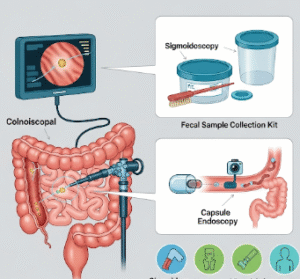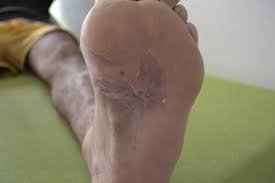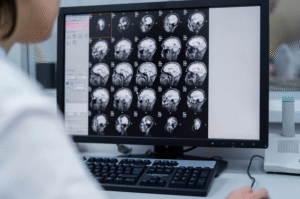Overview
Hemangioblastoma is a rare, benign (non-cancerous) tumor that typically occurs in the brain, spinal cord, or retina. While not malignant, it can cause serious complications due to its location in the central nervous system. In Korea, hemangioblastomas are treated at specialized neurosurgery and oncology centers using advanced surgical, imaging, and genetic diagnostic tools. Some cases are linked to Von Hippel-Lindau (VHL) disease, a genetic disorder that predisposes individuals to multiple tumors.
What is Hemangioblastoma?
A hemangioblastoma is a vascular tumor made up of blood vessel cells. It most commonly appears in the cerebellum, spinal cord, or brainstem, though it can also occur in the retina. Hemangioblastomas can be sporadic (isolated) or associated with genetic conditions such as VHL.
Symptoms
- Headaches (due to increased intracranial pressure)
- Nausea and vomiting
- Loss of balance or coordination
- Visual disturbances (if in the retina or occipital region)
- Weakness or numbness in arms/legs (spinal cord involvement)
- Seizures (in rare brain cases)
Causes
- Sporadic development with no clear external cause
- Genetic mutation linked to Von Hippel-Lindau (VHL) disease
- Abnormal blood vessel growth in the central nervous system
Risk Factors
- Family history of VHL disease
- Genetic mutations
- Middle-aged adults (though it can occur at any age)
- Having multiple central nervous system tumors
Complications
- Hydrocephalus (fluid buildup in the brain)
- Permanent neurological deficits (if untreated)
- Vision loss (retinal hemangioblastomas)
- Increased risk of multiple tumors in VHL patients
- Recurrence after surgical removal in some cases
Prevention
- There is no way to prevent sporadic hemangioblastomas
- Genetic testing and regular MRI/eye exams for individuals with VHL disease
- Early detection through neurological screening in high-risk patients
Treatment Options in Korea
Diagnosis
- MRI and CT scans to identify tumor size and location
- Genetic testing for Von Hippel-Lindau syndrome
- Ophthalmologic exams for retinal hemangioblastomas
- Biopsy (rarely needed, as imaging is often sufficient)
Medical Treatments
- Monitoring for small, asymptomatic tumors
- Corticosteroids to reduce swelling and pressure symptoms
- Symptomatic treatment (anti-seizure medication, pain management)













